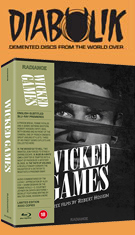



 public as an actor in Rififi and the popular Angelique series, Robert Hossein also started to carve out a
public as an actor in Rififi and the popular Angelique series, Robert Hossein also started to carve out a 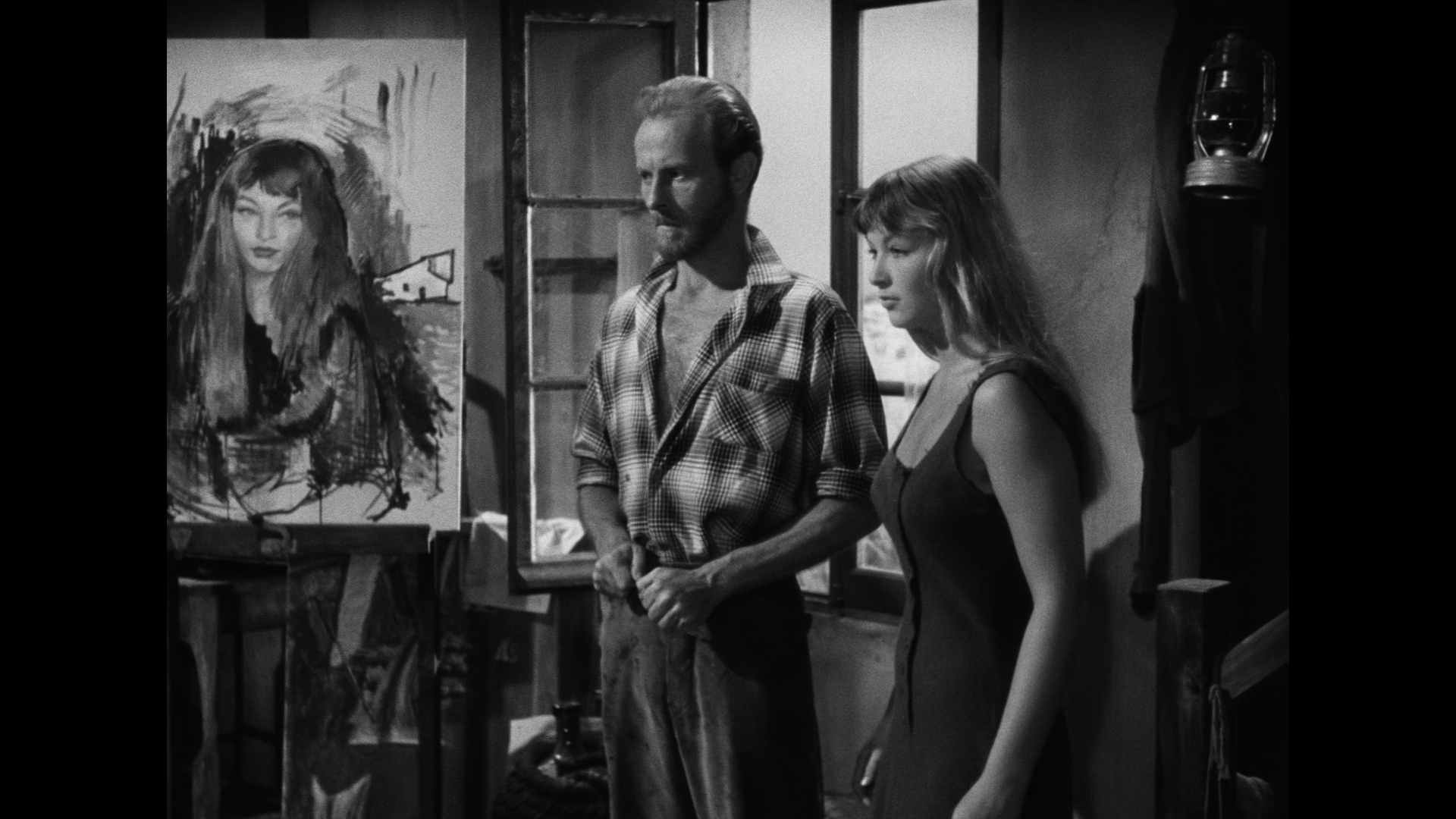 fascinating and sometimes very unexpected career as a director starting in 1955. Drawn to pulp material and crime stories in particular, he often used his father André Hossein as his composer and was far removed from the attitudes of most French New Wave filmmakers at the time. Since then his films like The Vampire of Dusseldorf have gained in stature considerably, and while it was once extremely difficult to see his films in watchable condition during the home video era, recent much-needed restorations have made his work easier to enjoy and appreciate. Case in point: the 2025 U.S. and U.K. three-disc Blu-ray set from Radiance Films, Wicked Games: Three Films by Robert Hossein, which represents the English-subtitled debut of a trio of titles previously available in French-only DVD and Blu-ray editions from Gaumont in France.
fascinating and sometimes very unexpected career as a director starting in 1955. Drawn to pulp material and crime stories in particular, he often used his father André Hossein as his composer and was far removed from the attitudes of most French New Wave filmmakers at the time. Since then his films like The Vampire of Dusseldorf have gained in stature considerably, and while it was once extremely difficult to see his films in watchable condition during the home video era, recent much-needed restorations have made his work easier to enjoy and appreciate. Case in point: the 2025 U.S. and U.K. three-disc Blu-ray set from Radiance Films, Wicked Games: Three Films by Robert Hossein, which represents the English-subtitled debut of a trio of titles previously available in French-only DVD and Blu-ray editions from Gaumont in France.  Both suspected as rats tied to a recently executed mob boss, prisoners Marquat (frequent Brigitte Bardot co-star Vidal) and Rudel (The Leopard's Reggiani) find the walls of their existence closing in as the other inmates believe they could be rats.
Both suspected as rats tied to a recently executed mob boss, prisoners Marquat (frequent Brigitte Bardot co-star Vidal) and Rudel (The Leopard's Reggiani) find the walls of their existence closing in as the other inmates believe they could be rats. 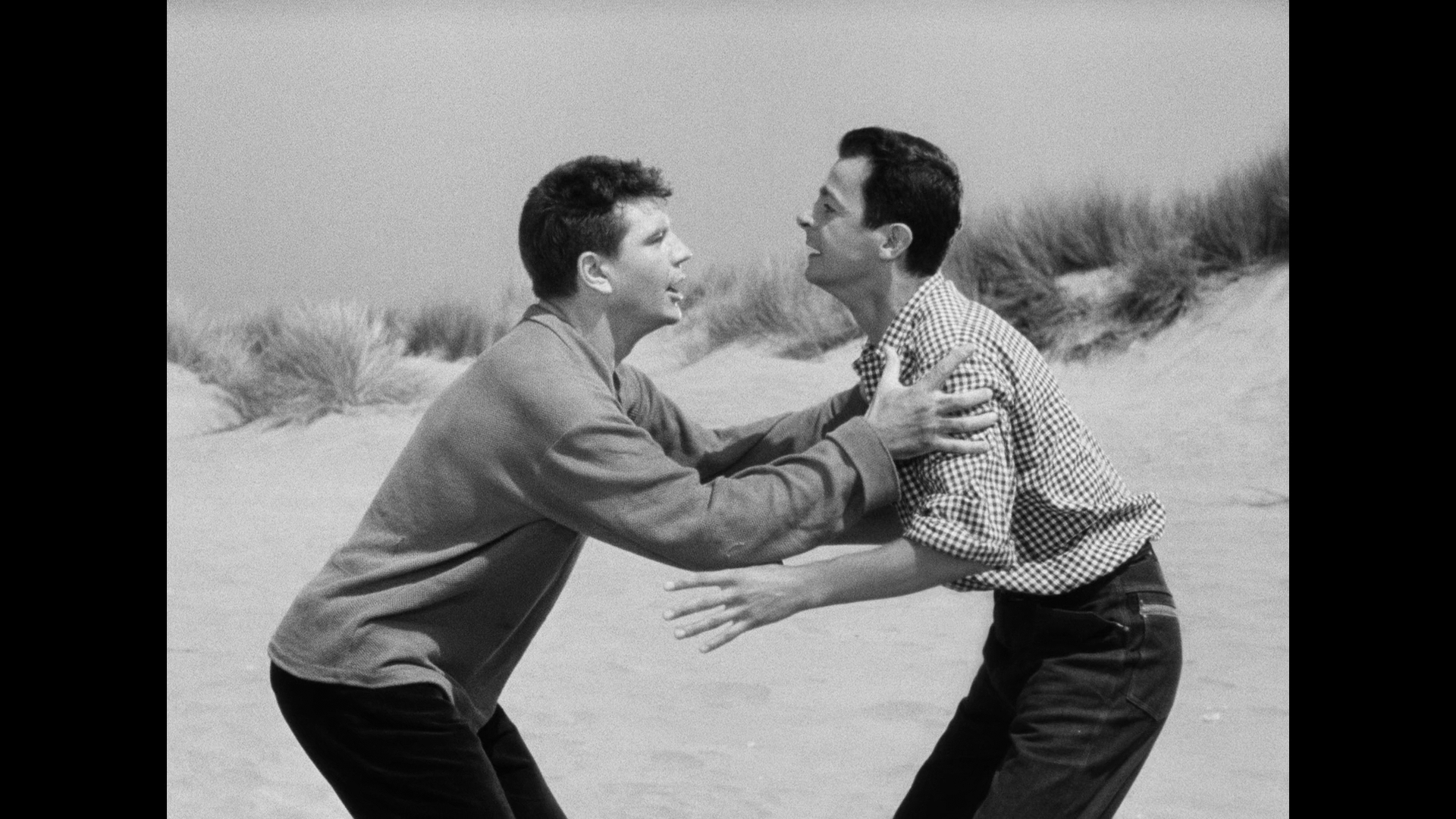 They come up with a violent escape plan, after which the action shifts to the beach where they hole up with Eva (Vlady, Hossein's wife at the time) and her artist boyfriend. Soon a hostage situation that develops and proves little more comfort than the prison setting the two men had escaped. An opening disclaimer notes that the film isn't intended as an indictment of the French penal system, which is understandable given the very unflattering and harsh nature of the first half which feels like a descendant of '30s and '40s social issues Hollywood films before shifting gears into virtual noir territory. The two leads are both excellent, and Hossein's precision as a director is already impressive particularly in his use of both landscapes and tight interiors to create a sense of discomfort. It's also the first of his many films to make use of the coast as a dangerous physical manifestation of its characters' psychology, here pointing to a resolution darker than the source material.
They come up with a violent escape plan, after which the action shifts to the beach where they hole up with Eva (Vlady, Hossein's wife at the time) and her artist boyfriend. Soon a hostage situation that develops and proves little more comfort than the prison setting the two men had escaped. An opening disclaimer notes that the film isn't intended as an indictment of the French penal system, which is understandable given the very unflattering and harsh nature of the first half which feels like a descendant of '30s and '40s social issues Hollywood films before shifting gears into virtual noir territory. The two leads are both excellent, and Hossein's precision as a director is already impressive particularly in his use of both landscapes and tight interiors to create a sense of discomfort. It's also the first of his many films to make use of the coast as a dangerous physical manifestation of its characters' psychology, here pointing to a resolution darker than the source material. 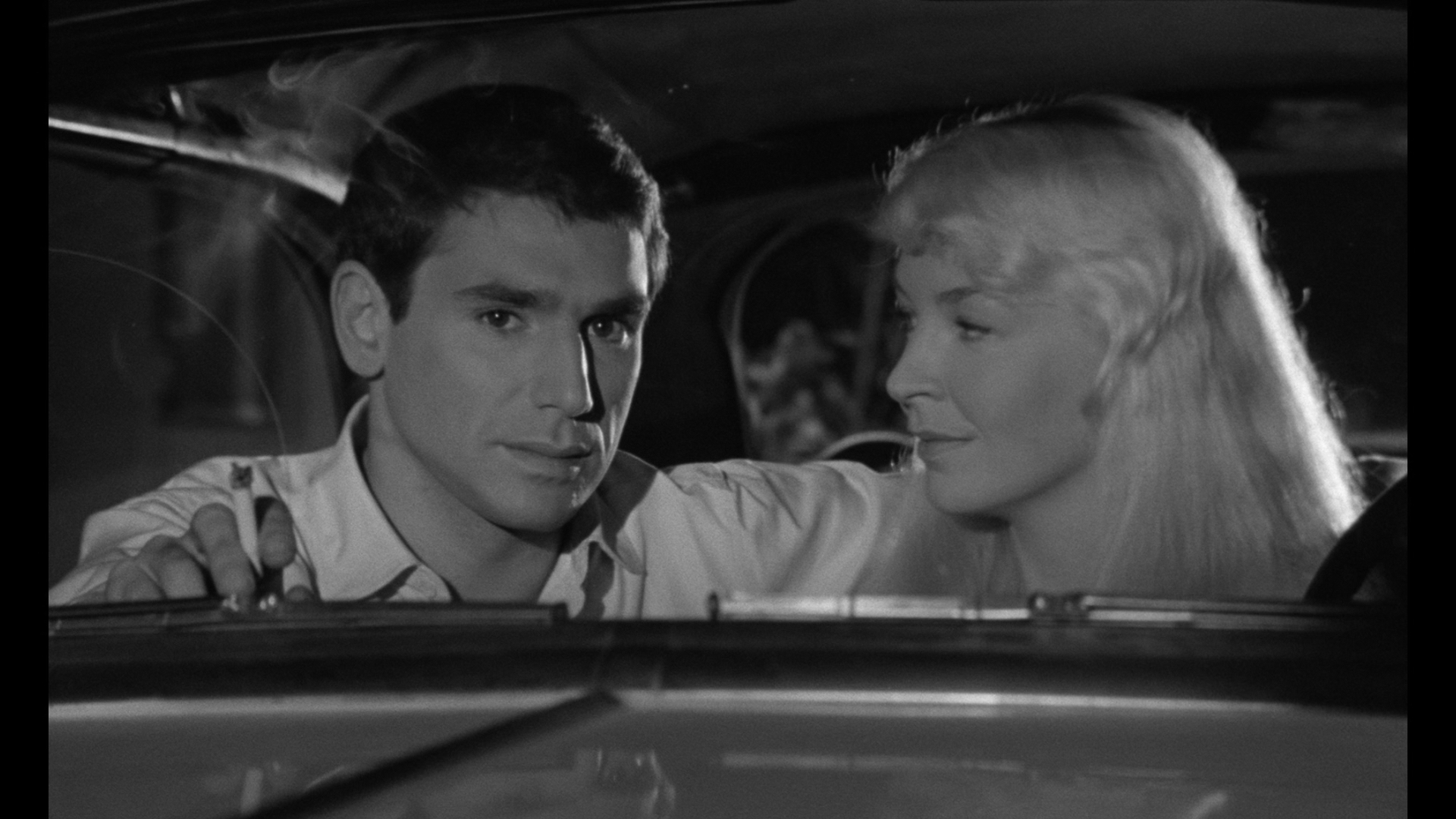 Next is the more traditionally noir-style Nude in a White Car, the sensationalist English title for Toi... le venin (or "You... the Venom"). Also taken from a Dard novel, it features Hossein himself as the lead (graduating from a small supporting role in
Next is the more traditionally noir-style Nude in a White Car, the sensationalist English title for Toi... le venin (or "You... the Venom"). Also taken from a Dard novel, it features Hossein himself as the lead (graduating from a small supporting role in  the prior film) with Vlady returning to star as well. Here he plays Pierre, a drifter who becomes fixated with tracking down a mysterious unclad blonde woman with an obscured face who ordered him at gunpoint to get out and tried to kill him after sharing a car ride. The trail leads to reclusive sisters Hélène (Cartouche's Versois) and wheelchair-bound Eva (Vlady), with whom he becomes entangled in a strange psychological game as a vengeful but libidinous Pierre tries to figure out which of the two blondes he met on that dark road. Compared to the same year's Vertigo on multiple occasions (though Hitchcock probably wouldn't have settled for the really cheap wig Vlady wears), this one also plays to some extent like a forerunner to the later What Ever Happened to Baby Jane with its highly dysfunctional sisters with varying degrees of mobility. Again it's all shot extremely well,
the prior film) with Vlady returning to star as well. Here he plays Pierre, a drifter who becomes fixated with tracking down a mysterious unclad blonde woman with an obscured face who ordered him at gunpoint to get out and tried to kill him after sharing a car ride. The trail leads to reclusive sisters Hélène (Cartouche's Versois) and wheelchair-bound Eva (Vlady), with whom he becomes entangled in a strange psychological game as a vengeful but libidinous Pierre tries to figure out which of the two blondes he met on that dark road. Compared to the same year's Vertigo on multiple occasions (though Hitchcock probably wouldn't have settled for the really cheap wig Vlady wears), this one also plays to some extent like a forerunner to the later What Ever Happened to Baby Jane with its highly dysfunctional sisters with varying degrees of mobility. Again it's all shot extremely well,  with Hossein's considerable acting experience making him confident in tailoring the lead role here for himself. Again his dad handles the music duties, showing more of a sure and modern hand here with one of their best collaborations.
with Hossein's considerable acting experience making him confident in tailoring the lead role here for himself. Again his dad handles the music duties, showing more of a sure and modern hand here with one of their best collaborations. 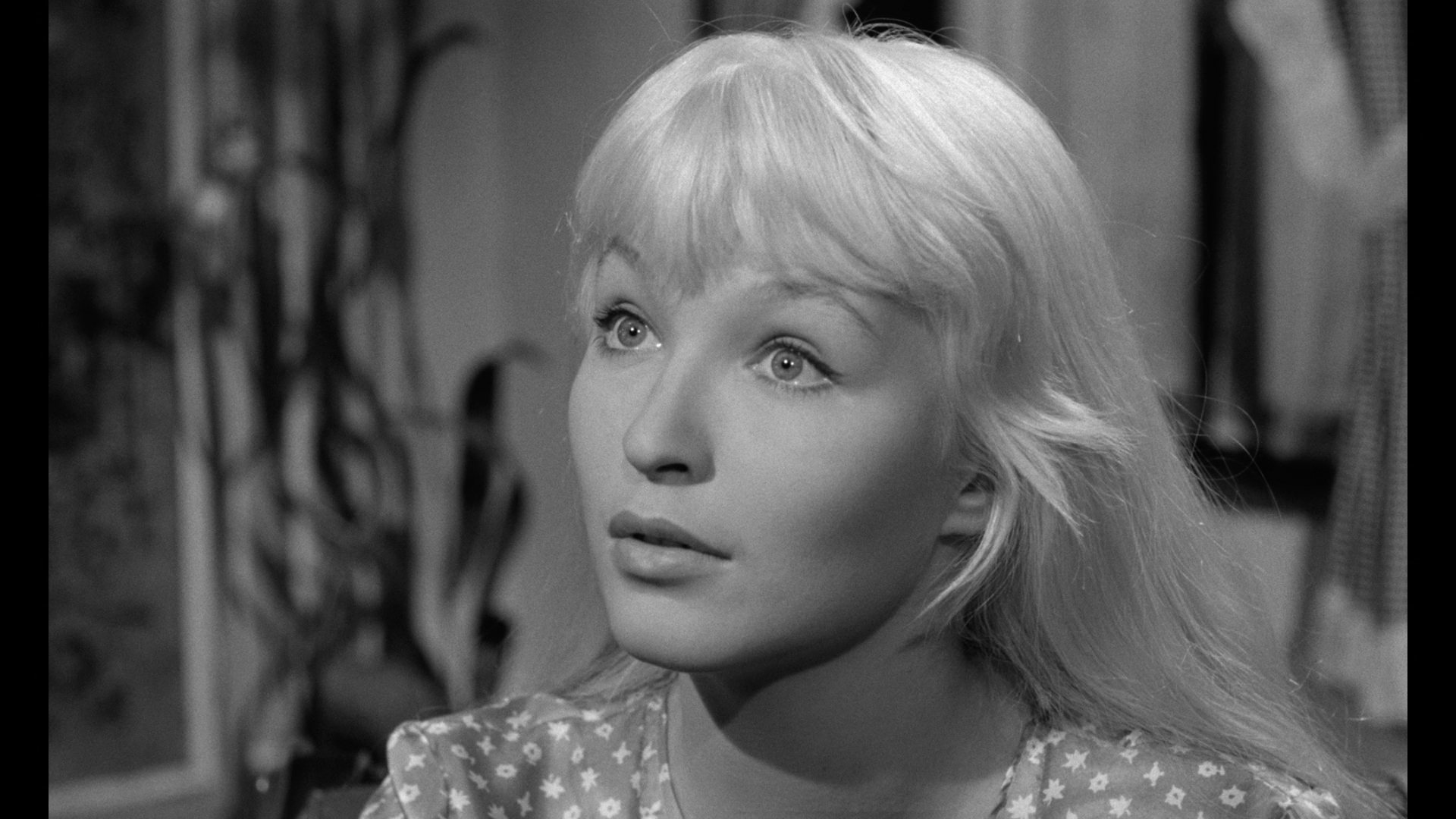 to his later quasi-spaghetti western riff, Cemetery without Crosses. Hossein stars again as Latin American revolutionary Perez, who executes a daring train heist plan to free fifty of his imprisoned comrades by abducting and holding captive Maria (Cold Eyes of Fear's Ralli), the daughter of the country's brutal dictator. The execution proves to be a challenge though as he spirits her across the rough countryside with his right-hand men, Chamaco (Short Night of Glass Dolls' Adorf) and the younger Chico (Neubert, whose career didn't go a lot further than this for some reason). Convictions and loyalties are soon tested (sometimes violently, of course) as Maria's presence has an unexpected influence on Perez and his belief in his cause. Though he gets the lion's share of dramatic close-ups here, this actually turns out to be the strongest showcase for Ralli who gets to show a great deal of range and conviction as the story progresses. It's also the most landscape-driven
to his later quasi-spaghetti western riff, Cemetery without Crosses. Hossein stars again as Latin American revolutionary Perez, who executes a daring train heist plan to free fifty of his imprisoned comrades by abducting and holding captive Maria (Cold Eyes of Fear's Ralli), the daughter of the country's brutal dictator. The execution proves to be a challenge though as he spirits her across the rough countryside with his right-hand men, Chamaco (Short Night of Glass Dolls' Adorf) and the younger Chico (Neubert, whose career didn't go a lot further than this for some reason). Convictions and loyalties are soon tested (sometimes violently, of course) as Maria's presence has an unexpected influence on Perez and his belief in his cause. Though he gets the lion's share of dramatic close-ups here, this actually turns out to be the strongest showcase for Ralli who gets to show a great deal of range and conviction as the story progresses. It's also the most landscape-driven 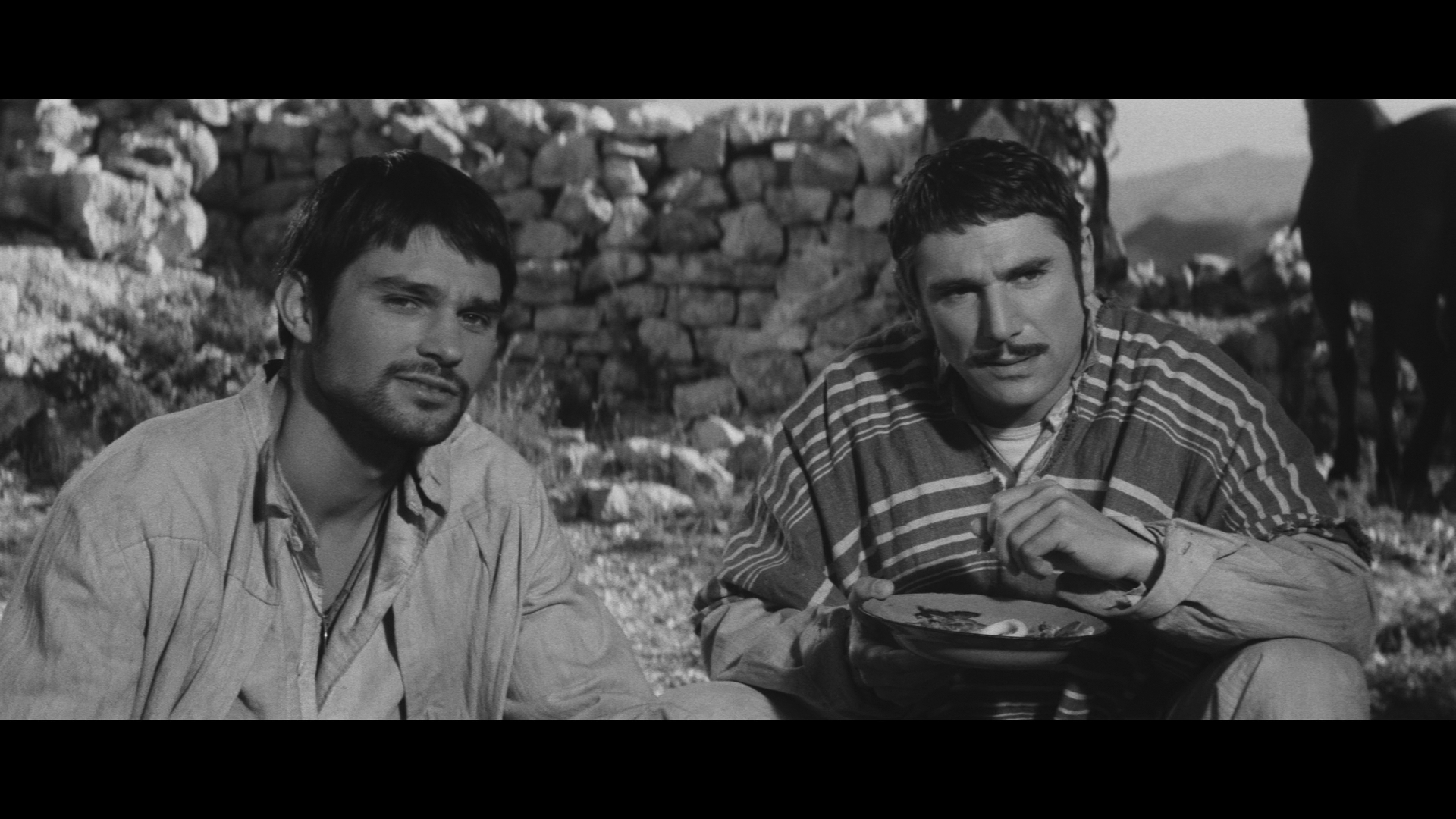 film of the three, here turning the sky and earth into psychological dividing lines that accentuate the core themes very effectively.
film of the three, here turning the sky and earth into psychological dividing lines that accentuate the core themes very effectively. 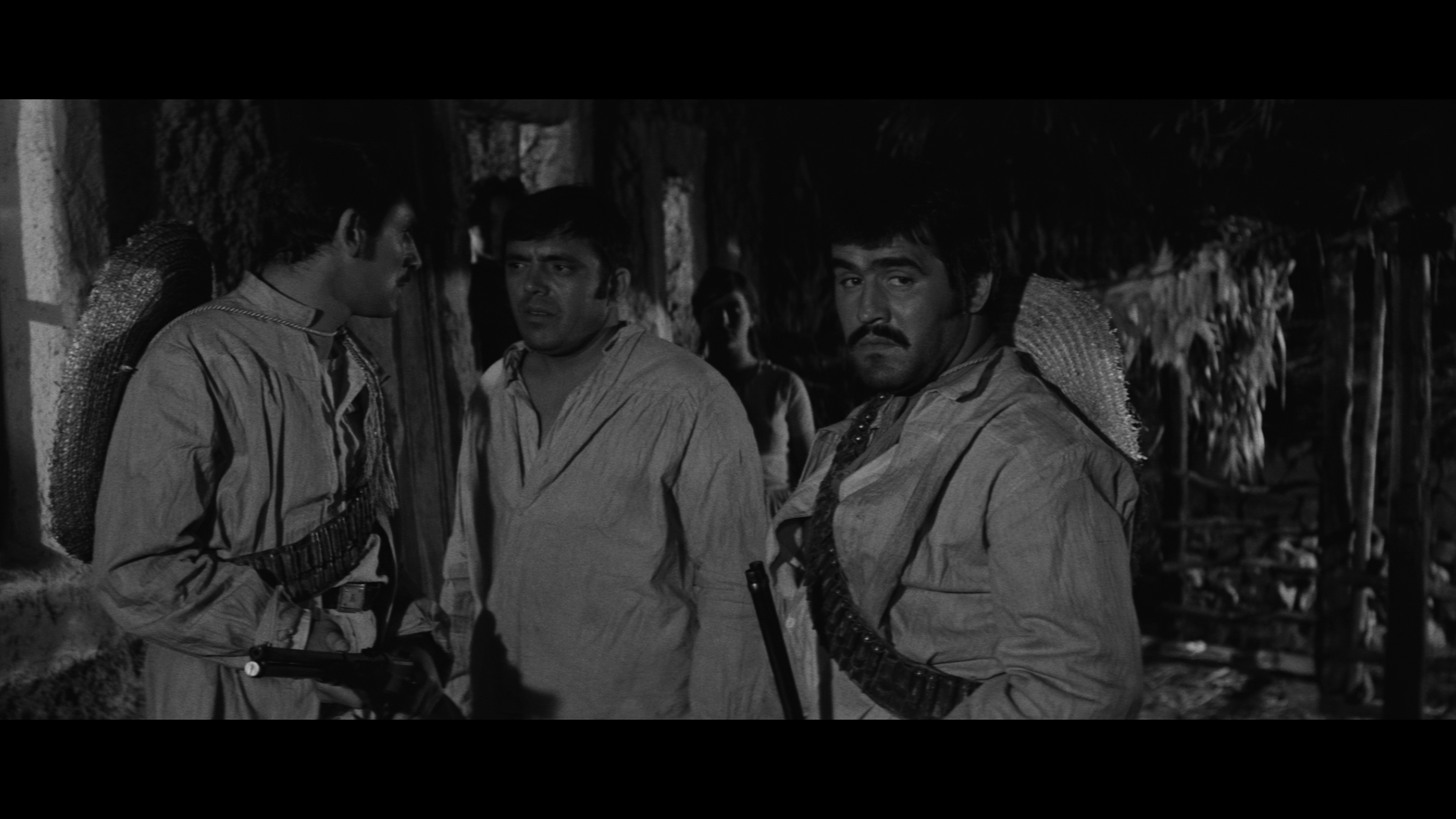 all immaculate and feature strong detail and contrast, and the LPCM 1.0 French mono tracks all sound pristine with excellent optional English subtitles provided. Tim Lucas provides new audio commentaries for all three films, delivering extensive ruminations on connected literary and cinematic works including Hitchcock and Boileau-Narcejac, his exposure to Hossein two years ago via Naked in a White Car that sparked his interest, the backgrounds of all the major players, and his own personal connections to the genre elements being explored here. Each film gets its own disc with the first also featuring "Picking Strawberries" (14m52s), a new featurette with historian Lucas Balbo discussing the making of The Wicked Go to Hell (and its text source) featuring snippets of archive interviews with Hossein and Jean Rollin about how the project came together. In "Behind Marked Eyes: The Cinematic Stare of Robert Hossein" (27m4s), Howard S. Berger studies the use of perception and visual reaction in Hossein's work and its connection to cinematic language as a whole, as well as a brief overview of the availability (or lack thereof) over the years. On disc two, an interview with Vlady (8m34s),
all immaculate and feature strong detail and contrast, and the LPCM 1.0 French mono tracks all sound pristine with excellent optional English subtitles provided. Tim Lucas provides new audio commentaries for all three films, delivering extensive ruminations on connected literary and cinematic works including Hitchcock and Boileau-Narcejac, his exposure to Hossein two years ago via Naked in a White Car that sparked his interest, the backgrounds of all the major players, and his own personal connections to the genre elements being explored here. Each film gets its own disc with the first also featuring "Picking Strawberries" (14m52s), a new featurette with historian Lucas Balbo discussing the making of The Wicked Go to Hell (and its text source) featuring snippets of archive interviews with Hossein and Jean Rollin about how the project came together. In "Behind Marked Eyes: The Cinematic Stare of Robert Hossein" (27m4s), Howard S. Berger studies the use of perception and visual reaction in Hossein's work and its connection to cinematic language as a whole, as well as a brief overview of the availability (or lack thereof) over the years. On disc two, an interview with Vlady (8m34s),  recorded in 2014 by
recorded in 2014 by 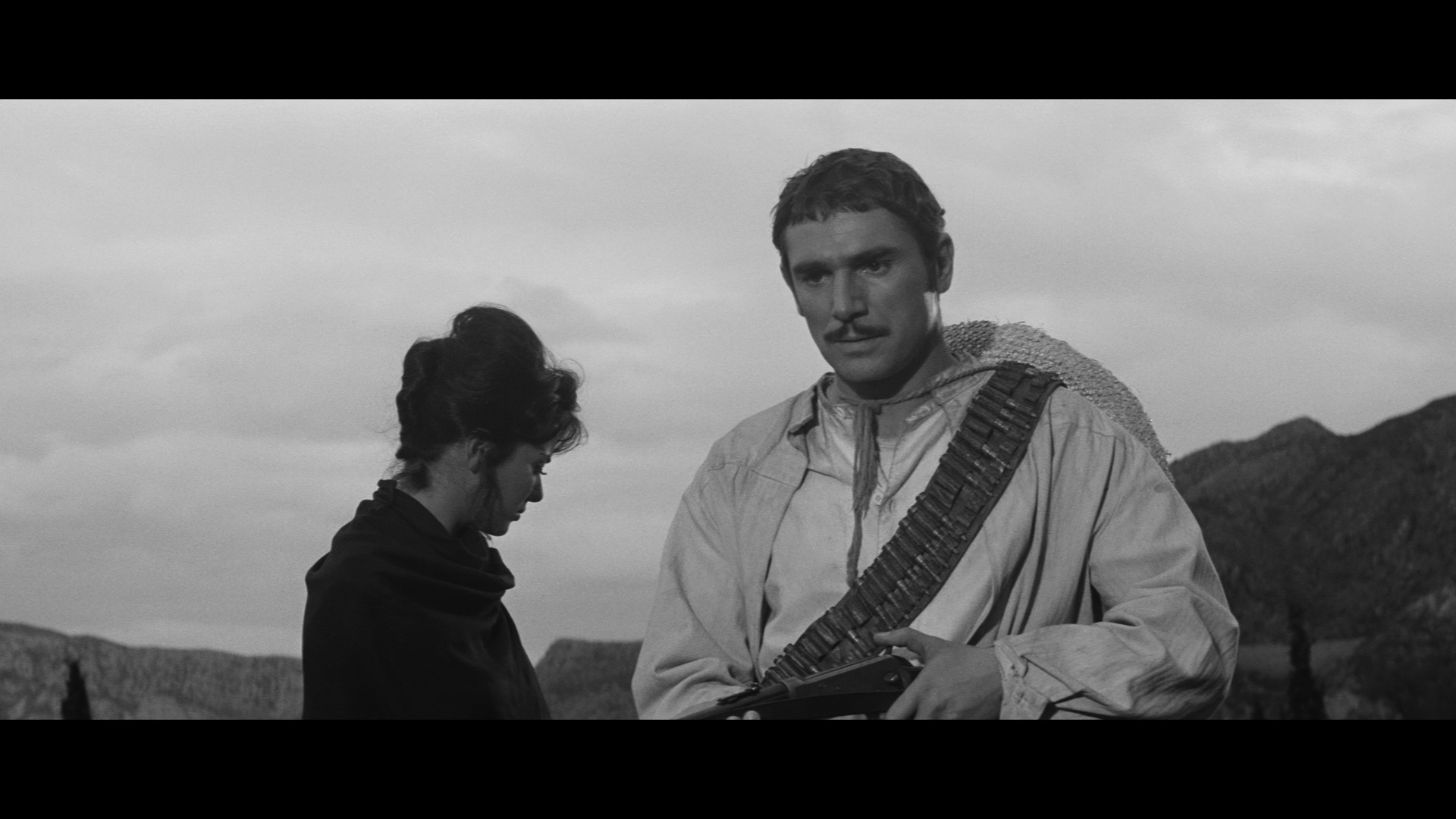 Gaumont for French home video, is a great look back at her work with Hossein, her repeated casting in his films during their five-year marriage, his "keen" directorial technique, and the nature of their relationship at home versus in front of the camera. Then "The Evolution of the Femme Fatale in Classic French Cinema" (16m39s) visual essay by Samm Deighan covers the noir-inspired postwar roles for leading ladies like Jeanne Moreau, Simone Signoret, and Jean Seberg as well as the unique spin in this film and the trademarks of the noir femme fatale as a whole. On disc three, Alex Cox gives a 7m24s appreciation of A Taste of Violence as a forerunner to the Euro western craze and a distinctly French version of tropes that would become familiar in Italian hits over the course of the next decade or so. Then C. Courtney Joyner gives his own 26m24s look at the film and its place as an early entry in the fascinating and often politically charged "Zapata western" trend popularized in Italy (by Sergio Corbucci, Sergio Leone, etc.), with the U.S.-Mexican border often standing in for larger statements about money, politics, and the darker side of human nature. The respective subtitled trailers for each film are also included, and the limited edition comes with an illustrated booklet featuring an excellent, in-depth essay by Walter Chaw ("Robert Hossein's Is a Cinema of Reluctance") as well as two Balbo-translated archival short interviews with Hossein.
Gaumont for French home video, is a great look back at her work with Hossein, her repeated casting in his films during their five-year marriage, his "keen" directorial technique, and the nature of their relationship at home versus in front of the camera. Then "The Evolution of the Femme Fatale in Classic French Cinema" (16m39s) visual essay by Samm Deighan covers the noir-inspired postwar roles for leading ladies like Jeanne Moreau, Simone Signoret, and Jean Seberg as well as the unique spin in this film and the trademarks of the noir femme fatale as a whole. On disc three, Alex Cox gives a 7m24s appreciation of A Taste of Violence as a forerunner to the Euro western craze and a distinctly French version of tropes that would become familiar in Italian hits over the course of the next decade or so. Then C. Courtney Joyner gives his own 26m24s look at the film and its place as an early entry in the fascinating and often politically charged "Zapata western" trend popularized in Italy (by Sergio Corbucci, Sergio Leone, etc.), with the U.S.-Mexican border often standing in for larger statements about money, politics, and the darker side of human nature. The respective subtitled trailers for each film are also included, and the limited edition comes with an illustrated booklet featuring an excellent, in-depth essay by Walter Chaw ("Robert Hossein's Is a Cinema of Reluctance") as well as two Balbo-translated archival short interviews with Hossein. ![]()